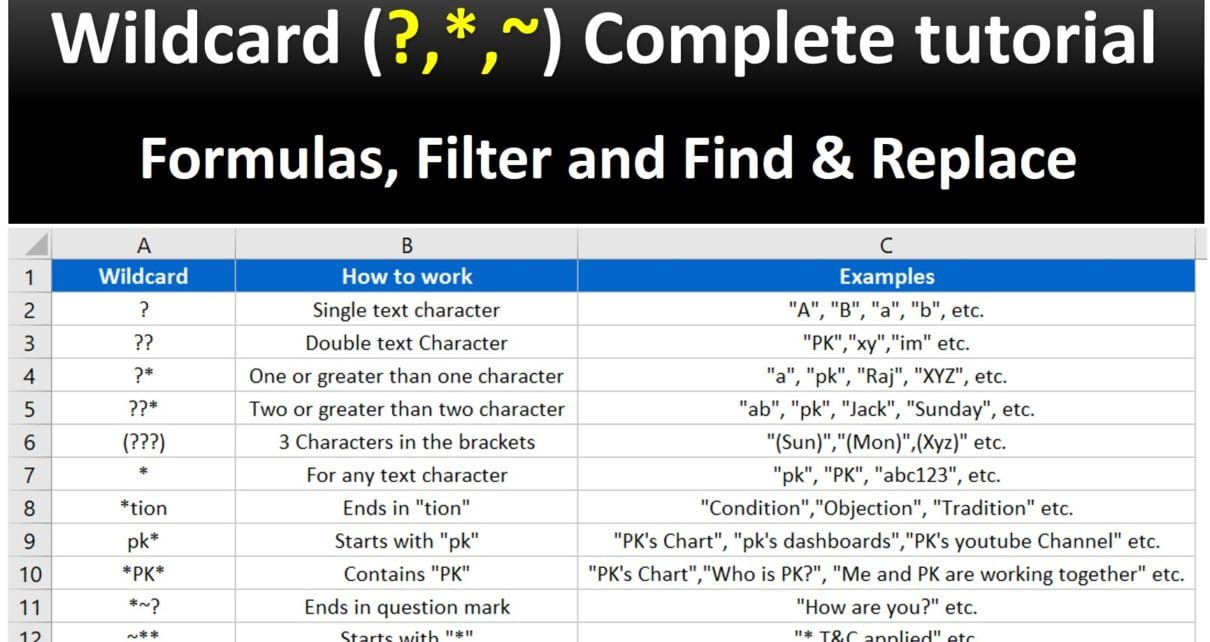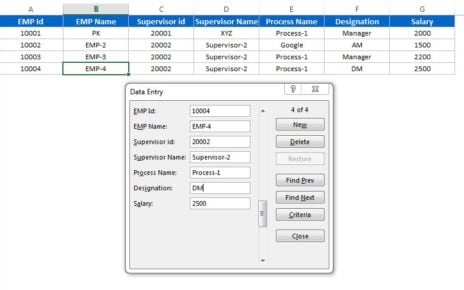In this article, you will learn how to use Wildcard in Microsoft Excel. Wildcard is very useful in excel and can make your work very easy.
What is Wildcard?
Wildcards are basically special characters. Using wildcards you can perform a fuzzy matching. They can take the place of any characters.
There are 3 types of wildcards available in Excel. They are asterisk (*), the question mark (?), and the tilde (~).
Below is the few Example of using these wildcards:
| Wildcard | How to work | Examples |
|---|---|---|
| ? | Single text character | "A", "B", "a", "b", etc. |
| ?? | Double text Character | "PK","xy","im" etc. |
| ?* | One or greater than one character | "a", "pk", "Raj", "XYZ", etc. |
| ??* | Two or greater than two character | "ab", "pk", "Jack", "Sunday", etc. |
| (???) | 3 Characters in the brackets | "(Sun)","(Mon)",(Xyz)" etc. |
| * | For any text character | "pk", "PK", "abc123", etc. |
| *tion | Ends in "tion" | "Condition","Objection", "Tradition" etc. |
| pk* | Starts with "pk" | "PK's Chart", "pk's dashboards","PK's youtube Channel" etc. |
| *PK* | Contains "PK" | "PK's Chart","Who is PK?", "Me and PK are working together" etc. |
| *~? | Ends in question mark | "How are you?" etc. |
| ~** | Starts with "*" | "* T&C applied" etc. |
Where can we use wildcards in Excel?
We can use wildcards in 3 places in excel – Formulas, Filters and Find & Replace
Wildcards in Formulas:
Below are the most common formulas wherein we use the wildcards in Excel:
Examples: Below are the below examples for wildcards in the formulas
We have some sample data as given in below image-
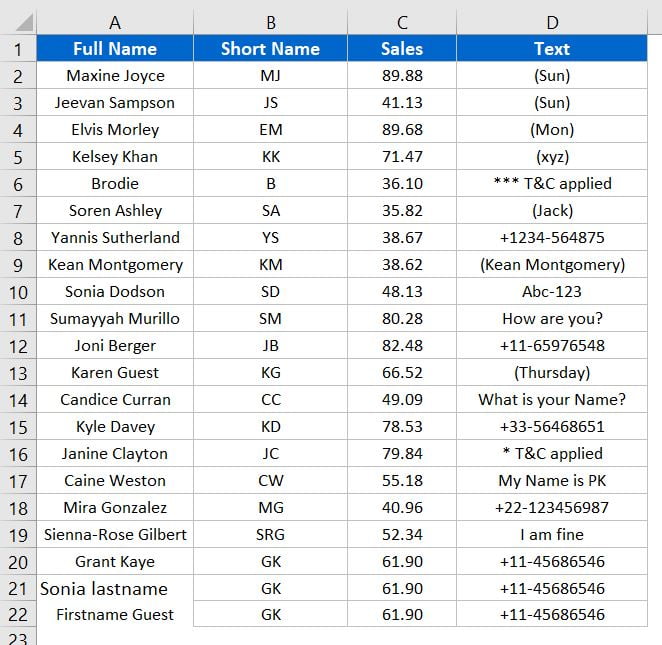
Example-1: To get the Sum of Sales and Count of full name on the base of First name, we have use below formulas-
Formula for Sales-
=SUMIF(A:A,F4&"*",C:C)
Formula for Count-
=COUNTIF(A:A,F4&"*")
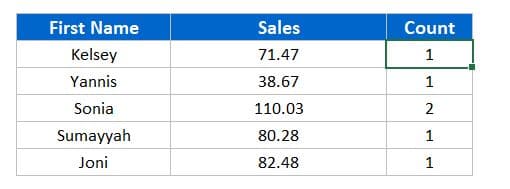
Example-2: To get the Sum of Sales and Count of full name on the base of Last name, we have use below formulas-
Formula for Sales-
=SUMIF(A:A,"*"&F11,C:C)
Formula for Count-
=COUNTIF(A:A,"*"&F11)
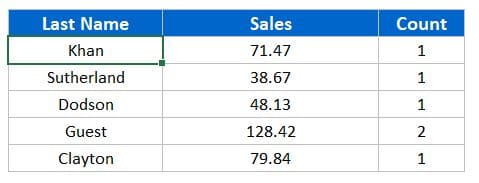
Example-3: We can use wildcards with VLOOKUP function also. To get the Short Name on the base of last name we have used below given formula-
=VLOOKUP("*"&F18,A:B,2,0)
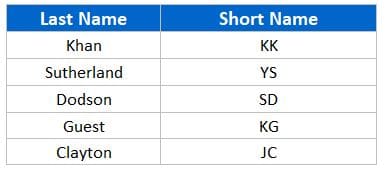
Example-4: To get the count of only text values from a range, we can use “*” wildcard-
=COUNTIF(E27:E31,"*")
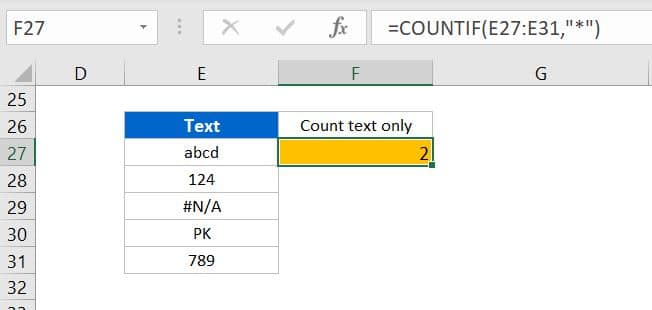
Example-5: To get the count of text wherein at-least one character is available.
=COUNTIF(F35:F39,"?*")
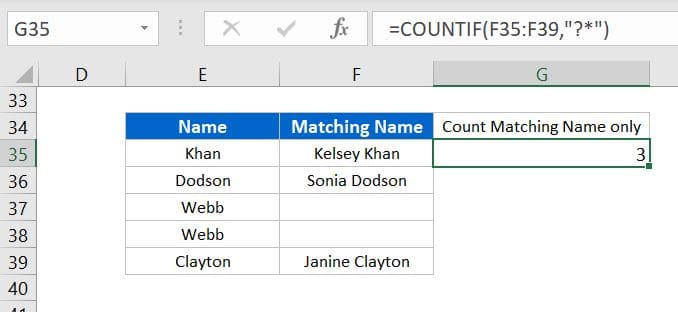
Example-6: There are few other examples where we have used wildcard in below image-
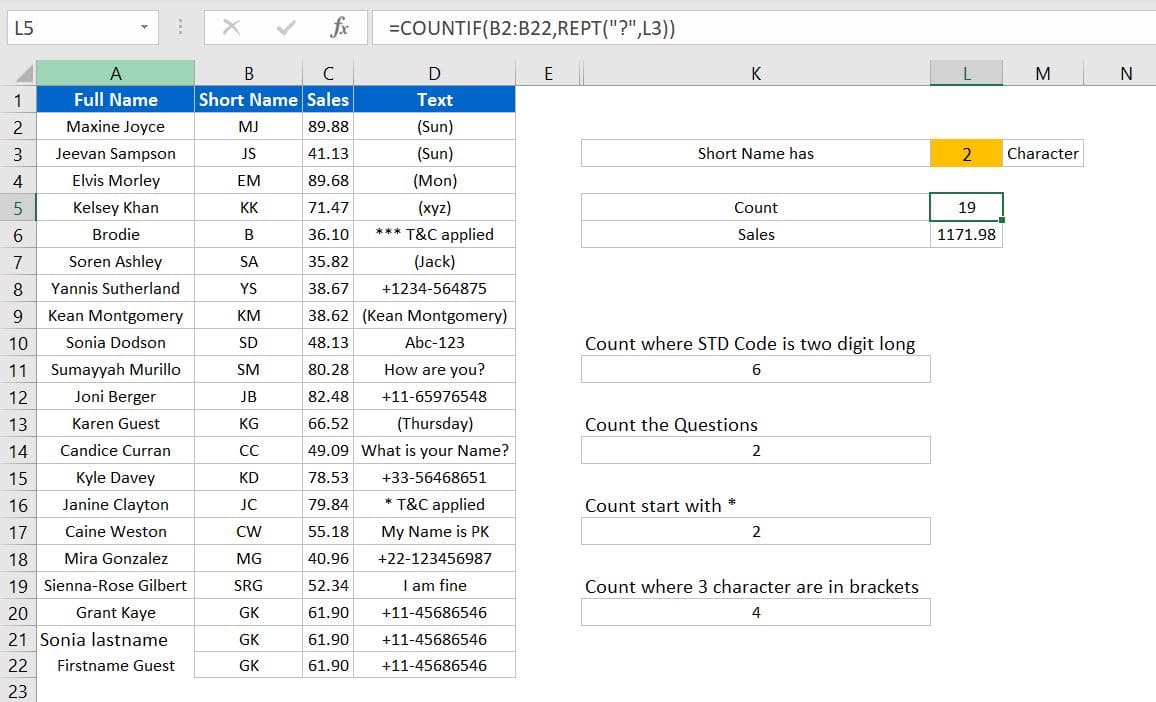
Count of Short name wherein it has number of character given in cell L3
=COUNTIF(B2:B22,REPT("?",L3))
Sum of Sales wherein Short Name has number of character given in cell L3
=SUMIF(B2:B22,REPT("?",L3),C2:C22)
Count where STD Code is two digits long in the Text column. There are few phone numbers with STD codes available in the Text Column like – “+1234-564875”, “+11-65976548”,”+33-56468651” etc.
=COUNTIF(D2:D22,"+??-*")
Count of the Questions in the Text Column
=COUNTIF(D2:D22,”*~?”)
Count start with * in the Text Column
=COUNTIF(D2:D22,"~**")
Count where 3 character are in brackets the Text Column
=COUNTIF(D2:D22,"(???)")
Wildcards in Filters:
You can use the wildcards while using the filter in Excel. Below are the below examples-
To filter all the Full Name starting with “K”, you can put “k*” in the search box-

To filter all the questions from the Text Column you put “~?” in the search box-
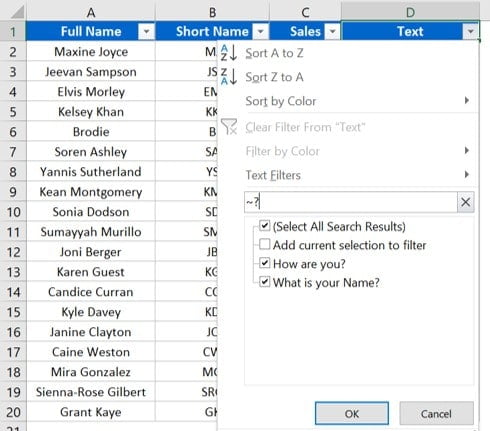
Wildcards in Find and Replace:
We can use the wildcard in Find and Replace also. Below are the few examples-
We can separate the Employee Name and Emp Id from the combination of Employee Name and ID which it together with “-” delimiter
To get the only Names from Name and Emp ID, we replace “-*” with blank
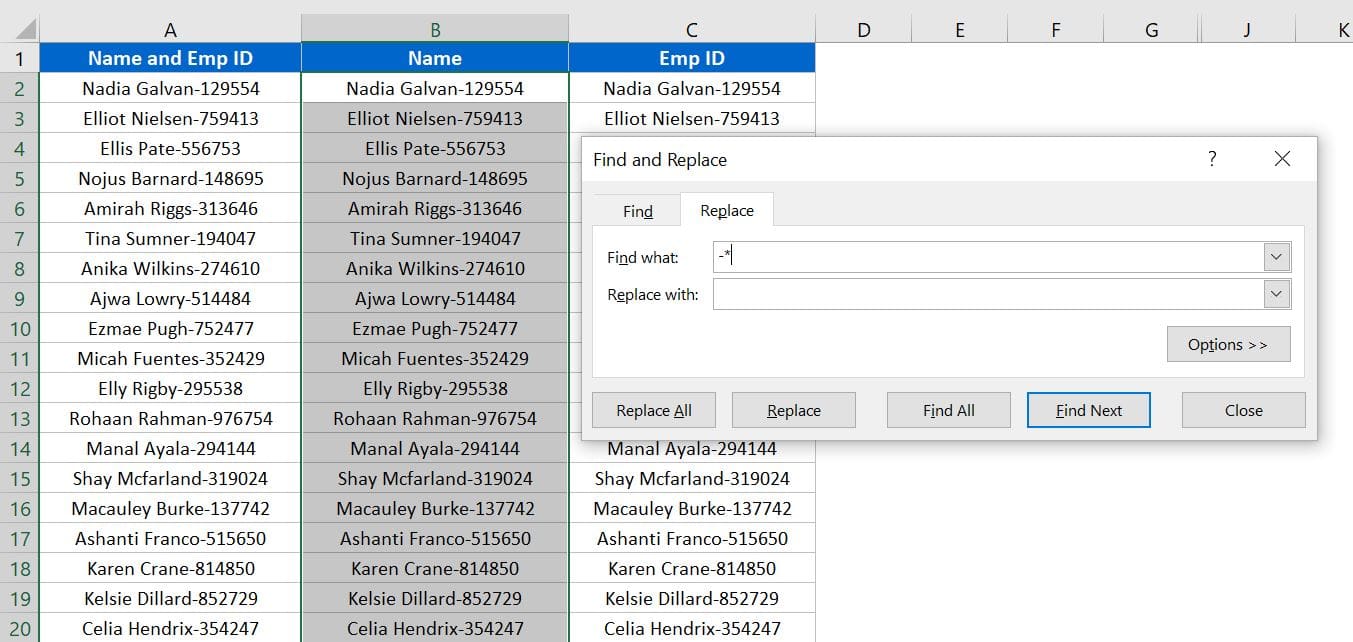
Only Name will be available-
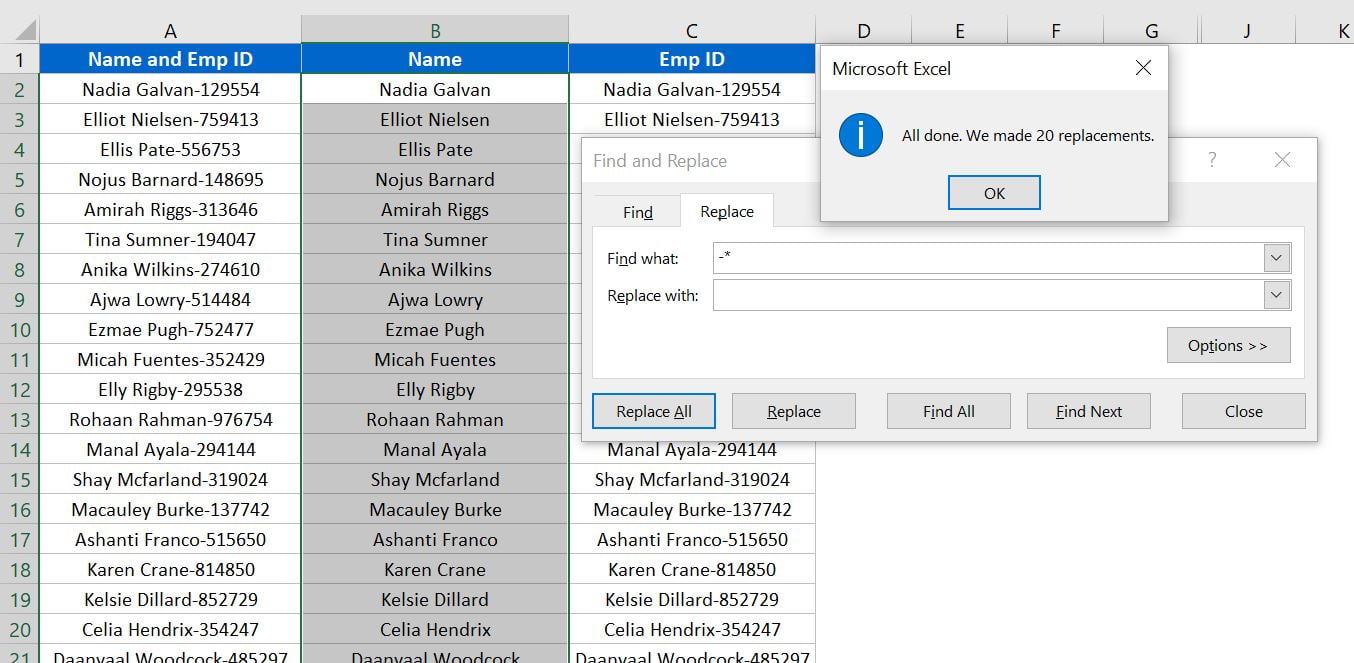
To get the only Emp IDs from Name and Emp ID, we replace “*-” with blank
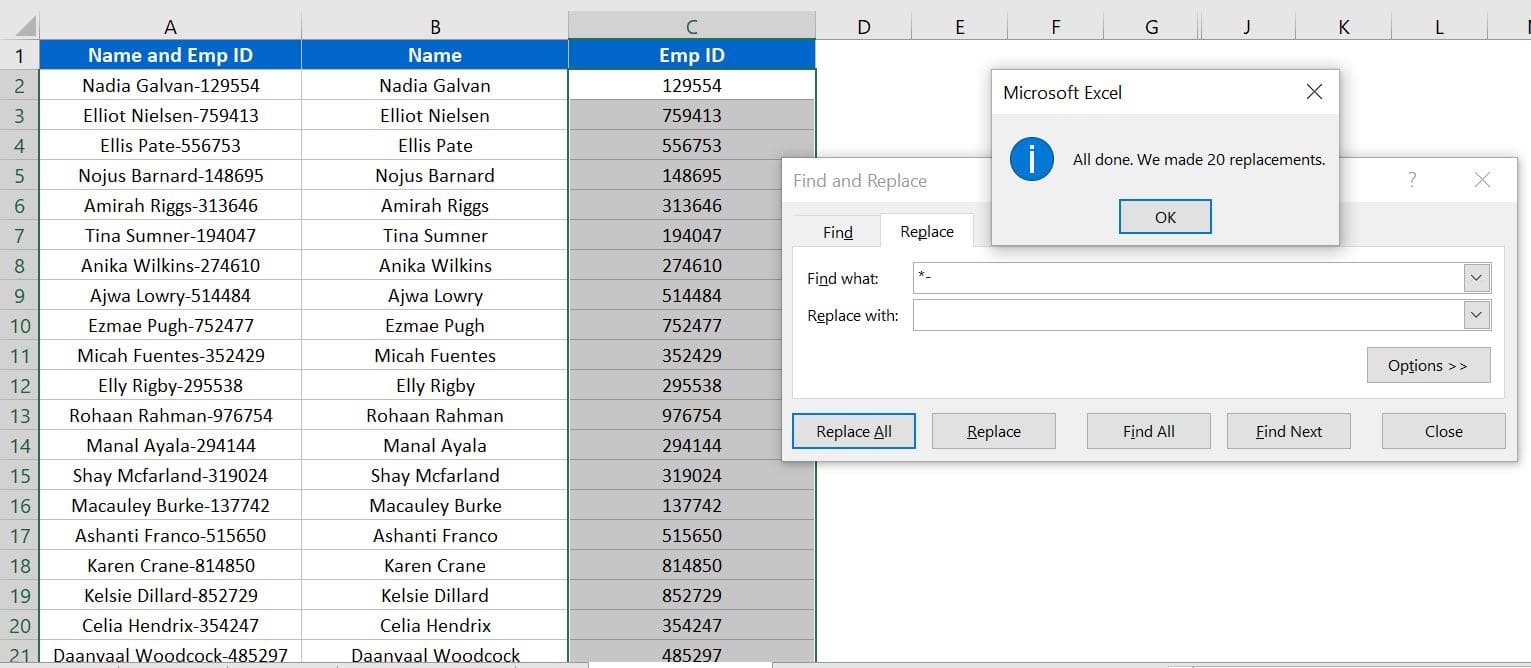
Visit our YouTube channel to learn step-by-step video tutorials
Watch the step by step video tutorial:
